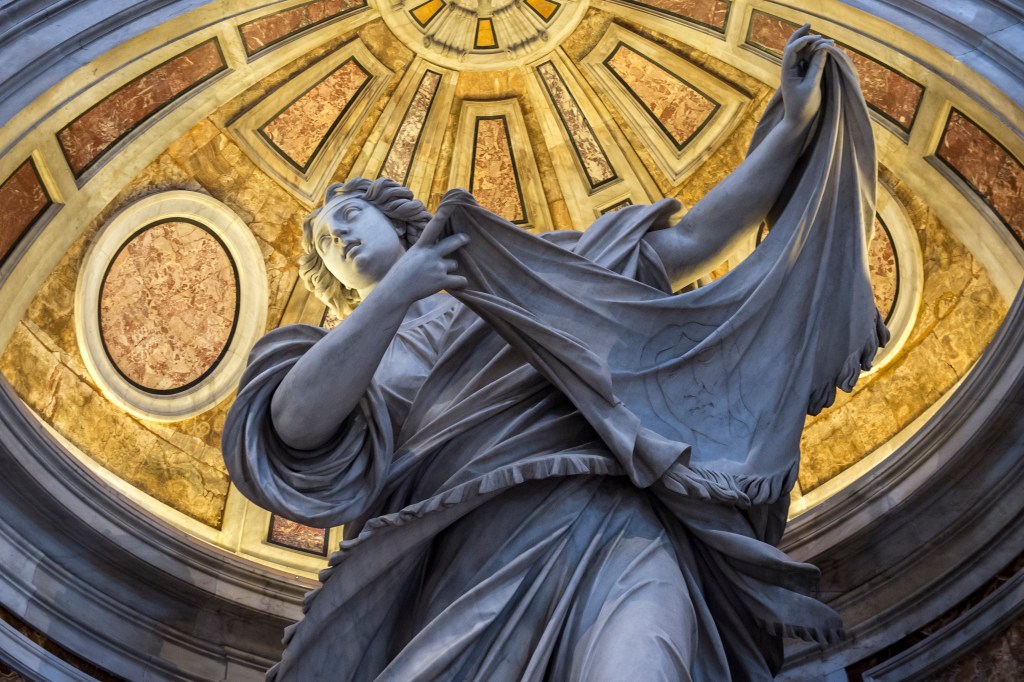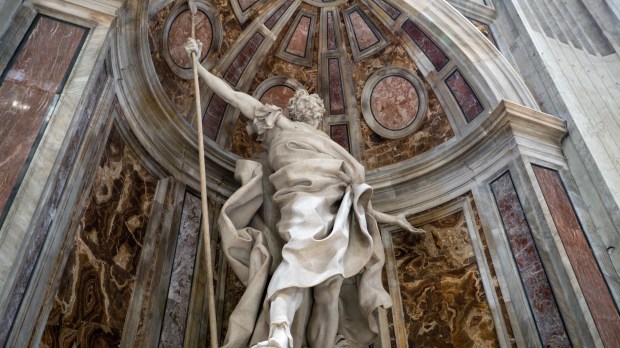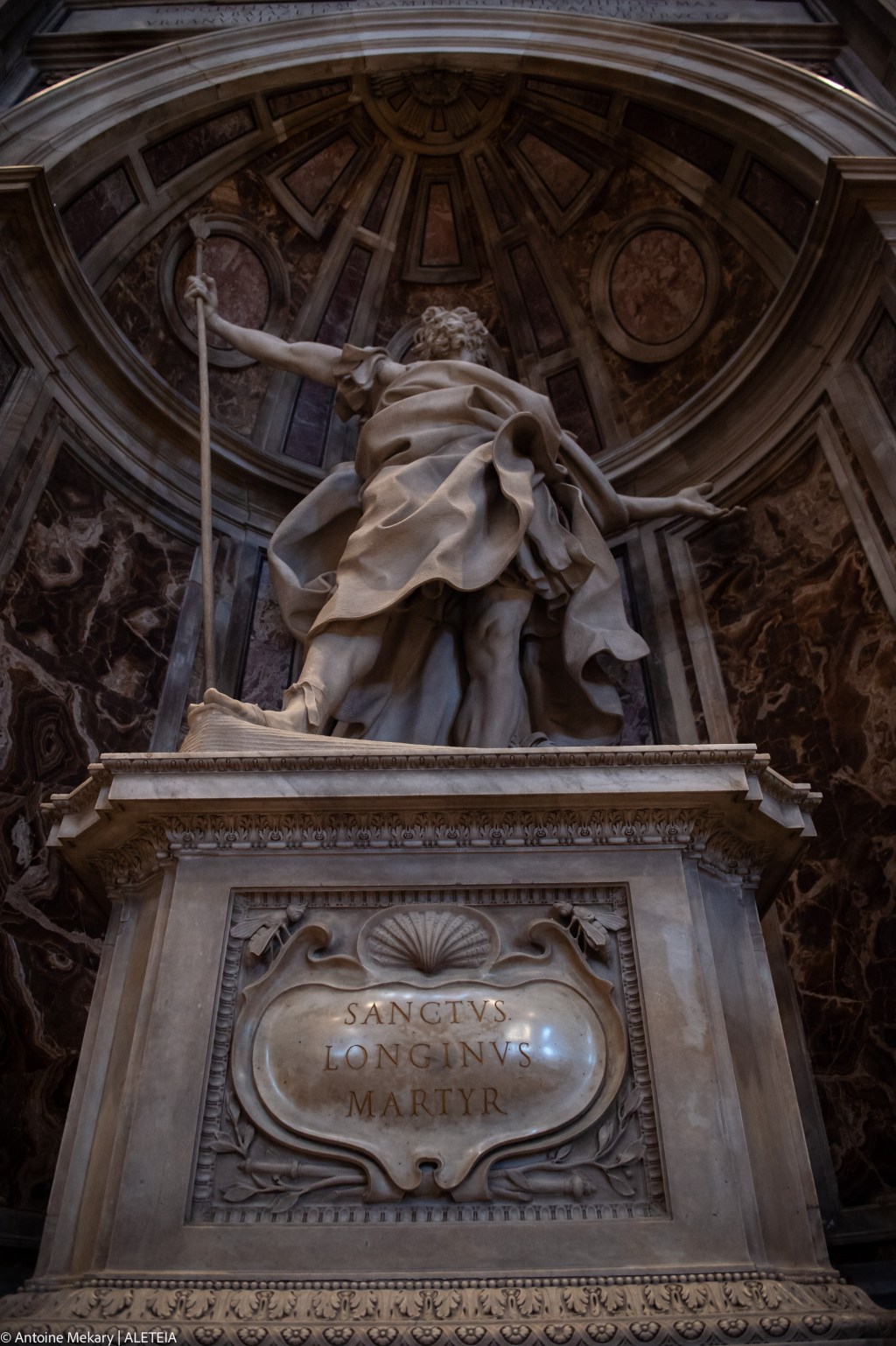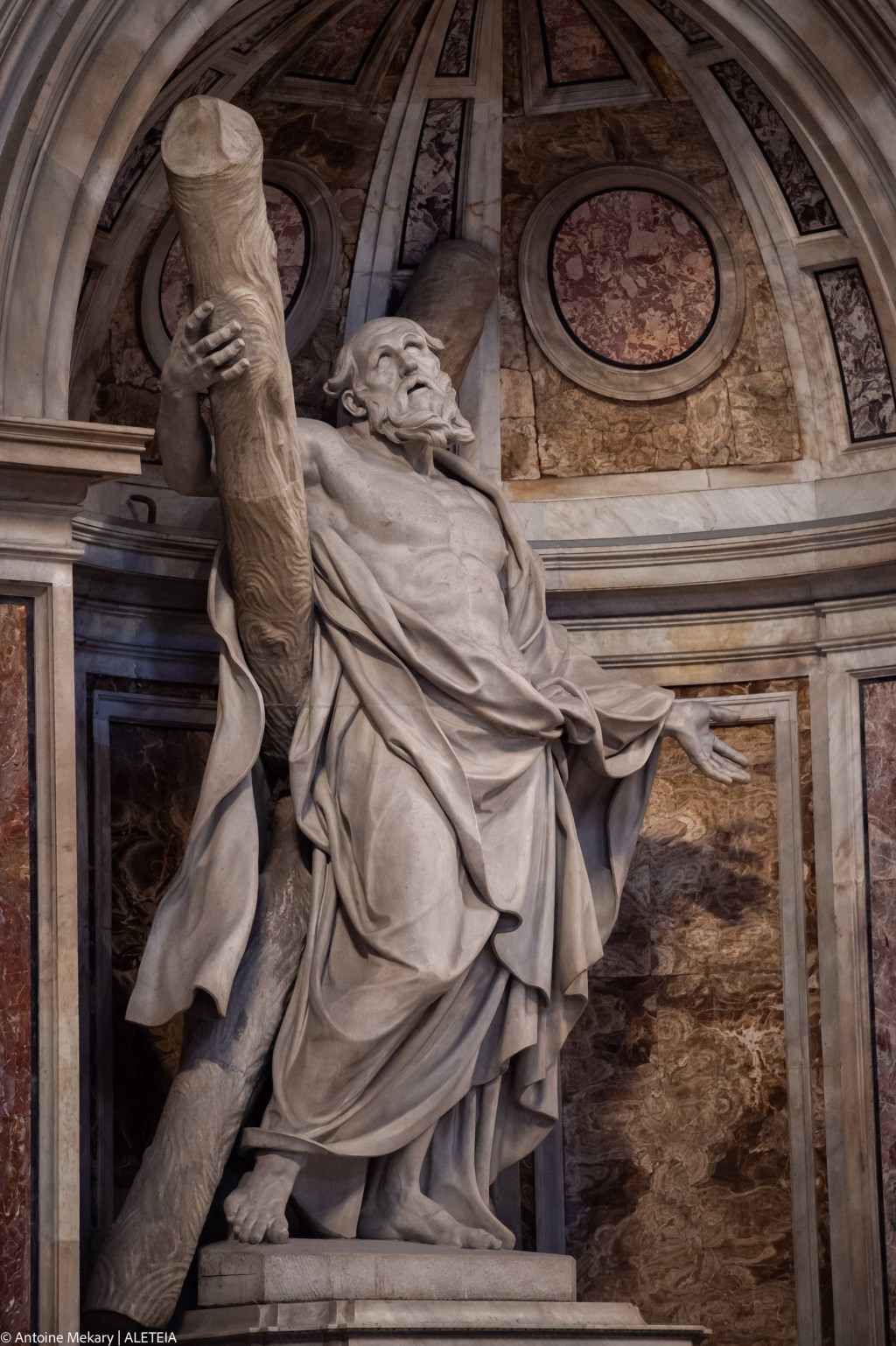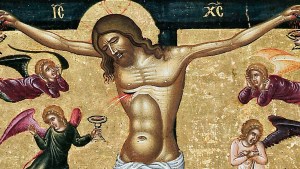Under the 447-foot-high dome of St. Peter’s Basilica, four Passion statues encircle the Papal Altar. Three are familiar figures: St. Veronica holds the veil with which she wiped the face of Jesus on the via crucis; St. Helena displays the True Cross she discovered in Jerusalem; and St. Andrew, the brother of St. Peter, leans into the X-shaped cross on which Andrew was martyred.
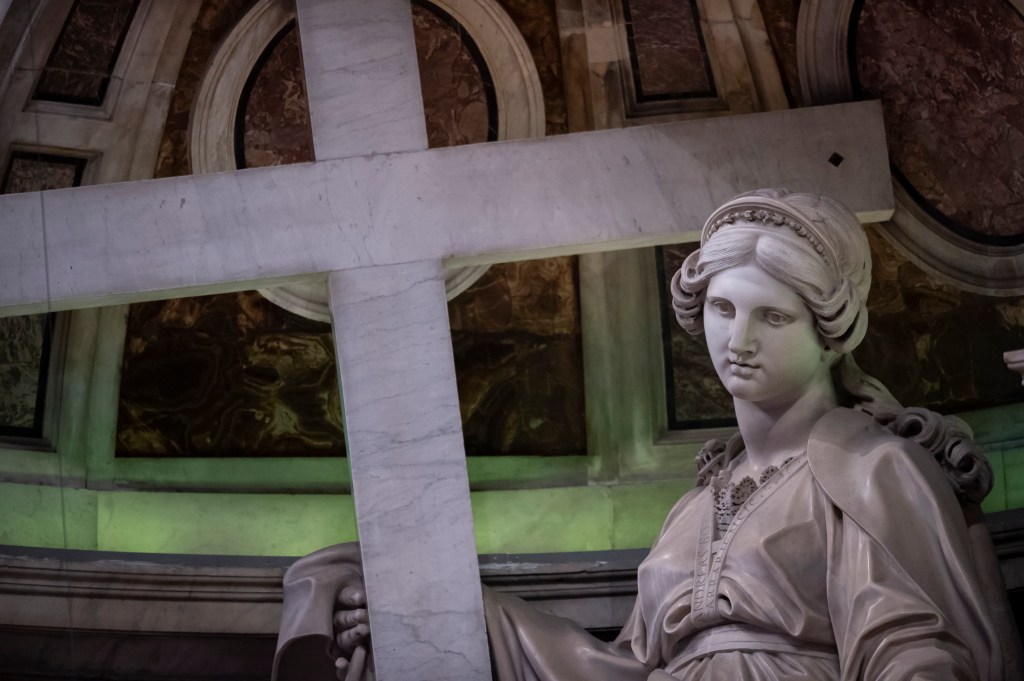
The fourth Passion statue, sculpted by Bernini, depicts a muscular soldier some 15 feet tall. His right arm is triumphantly extended. His right hand holds a lance pointing to the heavens. “Sanctus Longinus Martyr,” reads the Latin inscription.
Longinus was a Roman centurion at Golgotha on Good Friday. Tradition holds that it was Longinus who, near the end of the afternoon, thrust his lance into the side of Jesus to make sure he was dead. “Immediately,” St. John tells us, “blood and water flowed out.” (Jn. 19:34)
Longinus later converted to Christianity. We can only imagine his thoughts later that Friday evening, his armor still wet with blood and water. “I don’t know who that man was,” he might have marveled, “but I know that I must follow him.”
St. Longinus helps us understand the purpose of the Cross. What, in fact, does Jesus’ death on Calvary tell us? That God stays with us no matter what we do to Him. His love is not, never has been, and never will be contingent on what we do.
Good Friday underscores His scandalous preference for sinners over the righteous, and Longinus has the bloody spear tip to prove it. The centurion may not have known who Jesus was before Good Friday; he may not have cared. Yet God brought him closer to the Cross than even St. John or Mary.
When Longinus stabbed Jesus, he must have been shaken. He would have been covered with the blood and water that flowed from Christ’s side. In the Book of Exodus, a sprinkling of the blood of a lamb was a sign of God’s covenant with his people, a promise that he would be with them always. So too on Good Friday, the New Covenant was sealed with the blood of the Lamb. Longinus, the non-believing Gentile, was the first man to be sprinkled with the blood of the New Covenant. The man who stabbed God was the first man to whom God promised that He would be with him always.
The instrument with which Longinus stabbed our Lord, moreover, became the instrument of his salvation. No wonder he holds it triumphantly. At the foot of the cross, our sins, our flaws, and our weaknesses become occasions for us to be sprinkled with the blood of Jesus.
Today, let us stand with St. Longinus at the foot of the Cross. Some of us arrive at Good Friday like the centurion, not knowing Jesus. Perhaps some of us come with a lance in our hand, ready to stab Him again. But St. Longinus reminds us that Good Friday is not good because we make it good. God makes it good, and we stand beneath the Cross to be sprinkled by His blood.
